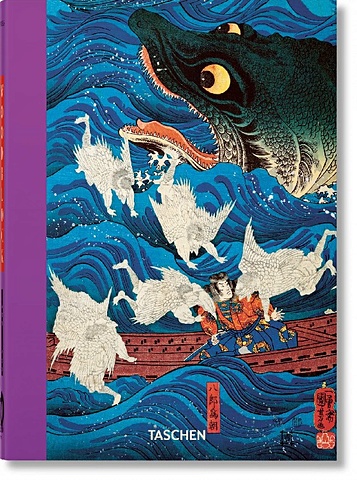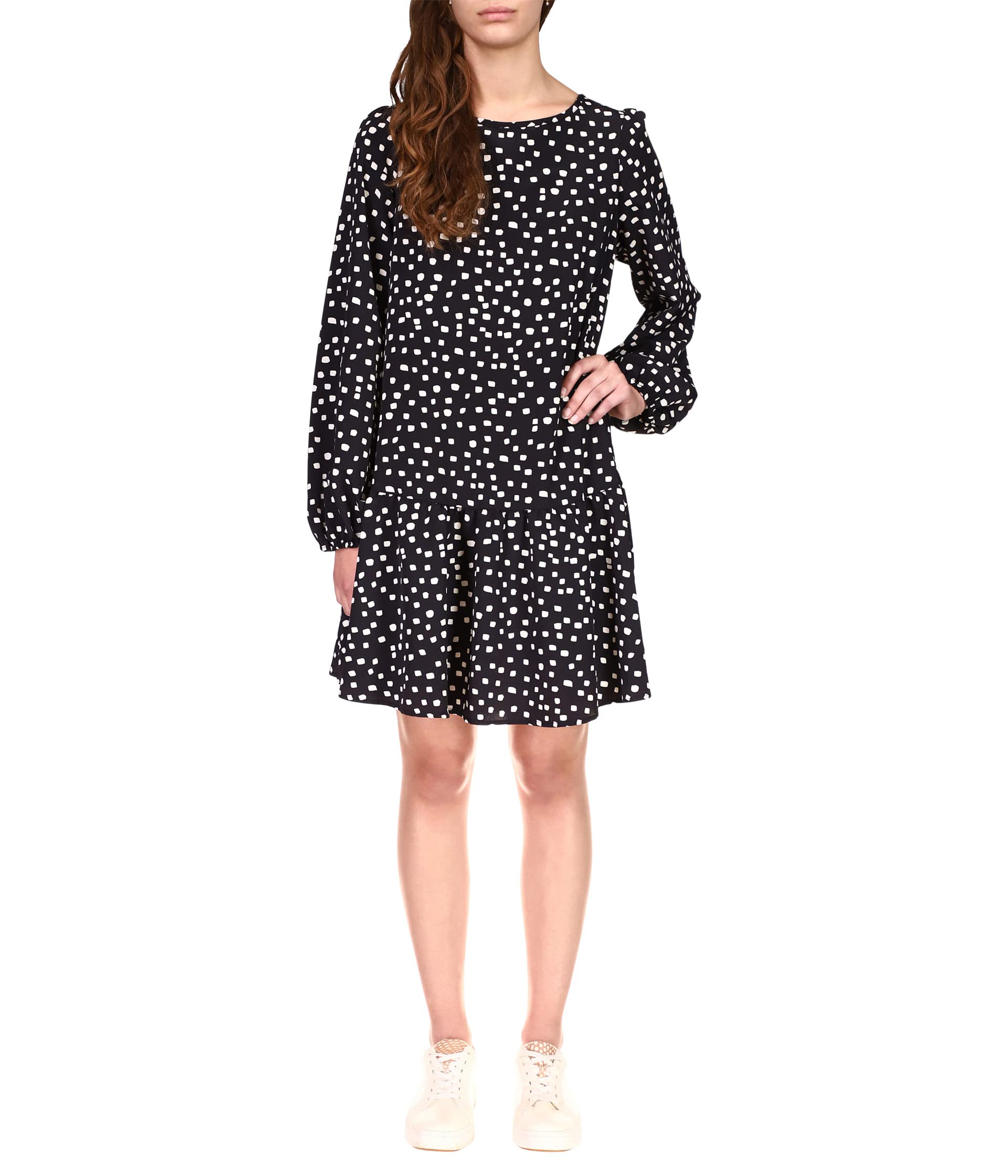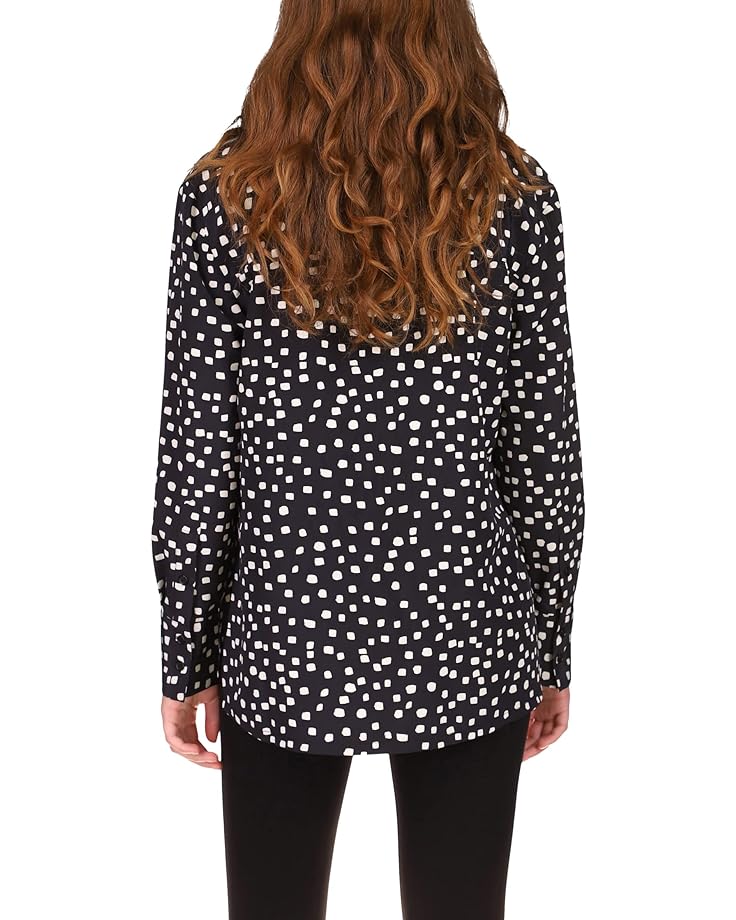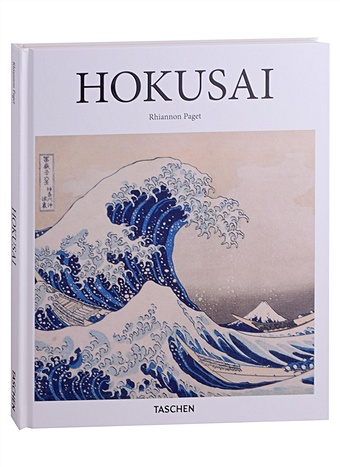andreas marks japanese woodblock prints

Marks Andreas Japanese Woodblock Prints
A visual history of 200 Japanese masterpieces From Edouard Manet’s portrait of naturalist writer Emile Zola sitting among his Japanese art finds to Van Gogh’s meticulous copies of the Hiroshige prints he devotedly collected, 19th-century pioneers of European modernism made no secret of their love of Japanese art. In all its sensuality, freedom, and effervescence, the woodblock print is single-handedly credited with the wave of japonaiserie that first enthralled France and, later, all of Europe—but often remains misunderstood as an “exotic” artifact that helped inspire Western creativity. The fact is that the Japanese woodblock print is a phenomenon of which there exists no Western equivalent. Some of the most disruptive ideas in modern art—including, as Karl Marx put it, that “all that is solid melts into air”—were invented in Japan in the 1700s and expressed like never before in the designs of such masters as Hokusai, Utamaro, and Hiroshige in the early 19th century. This book lifts the veil on a much-loved but little-understood art form by presenting the 200 most exceptional Japanese woodblock prints in their historical context. Ranging from the 17th-century development of decadent ukiyo-e, or “pictures of the floating world,” to the decline and later resurgence of prints in the early 20th century, the images collected in this edition make up an unmatched record not only of a unique genre in art history, but also of the shifting mores and cultural development of Japan. From mystical mountains to snowy passes, samurai swordsmen to sex workers in shop windows, each piece is explored as a work of art in its own right, revealing the stories and people behind the motifs. We discover the four pillars of the woodblock print—beauties, actors, landscapes, and bird-and-flower compositions—alongside depictions of sumo wrestlers, kabuki actors, or enticing courtesans—rock stars who populated the “floating world” and whose fan bases fueled the frenzied production of woodblock prints. We delve into the horrifying and the obscure in prints where demons, ghosts, man-eaters, and otherworldly creatures torment the living—stunning images that continue to influence Japanese manga, film, and video games to this day. We witness how, in their incredible breadth, from everyday scenes to erotica, the martial to the mythological, these works are united by the technical mastery and infallible eye of their creators and how, with tremendous ingenuity and tongue-in-cheek wit, publishers and artists alike fought to circumvent government censorship. Three years in the making, this XXL edition presents reproductions of the finest extant impressions from the vaults of museums and private collections across the globe—many newly photographed especially for this project. Some 17 stunning fold-outs invite us to study even the subtlest details, while extensive descriptions guide us through this frantic period in Japanese art history. Features: The work of 89 artists, from the world-renowned to the unfamiliar 7 chapters organized chronologically to trace the history of the medium from 1680 to 1938 17 fold-outs, hand-folded due to their size and specifications Exclusive reproductions from museums and private collections An appendix listing all artists and works
20466 Руб.

Andreas Marks. Japanese Woodblock Prints
Визуальная история японских шедевров.От портрета писателя-натуралиста Эмиля Золя Эдуарда Мане, сидящего среди находок японского искусства, до точных копий Ван Гога с гравюр Хиросигэ, которые он преданно собирал, пионеры европейского модернизма XIX века не скрывали своей любви к японскому искусству. При всей своей чувственности, свободе и искрометности гравюра на дереве единолично приписывается волне японизма, которая сначала захлестнула Францию, а затем и всю Европу, но часто остается ошибочно понятой как «экзотический» артефакт, который вдохновил западное творчество.Дело в том, что японская ксилография — явление, которому не существует западного аналога. Некоторые из самых прорывных идей в современном искусстве, в том числе, как выразился Карл Маркс, что «все твердое растворяется в воздухе», были изобретены в Японии в 1700-х годах и как никогда прежде нашли свое выражение в рисунках таких мастеров, как Хокусай, Утамаро и Хиросигэ в начале 19 века.Этот том, созданный на основе оригинальной монографии XXL, приподнимает завесу над любимым, но малопонятным видом искусства, представляя самые исключительные японские гравюры на дереве в их историческом контексте. Начиная с развития декадентского укиё-э, или «изображения плывущего мира», в 17 веке до упадка и последующего возрождения гравюр в начале 20 века, изображения, собранные в этом издании, составляют непревзойденный рекорд не только уникальный жанр в истории искусства, но также и о меняющихся нравах и культурном развитии Японии.От мистических гор до заснеженных перевалов, от фехтовальщиков-самураев до секс-работниц в витринах магазинов, каждое произведение исследуется как самостоятельное произведение искусства, раскрывая истории и людей, стоящих за мотивами. Мы обнаруживаем четыре столпа гравюры на дереве — красавиц, актеров, пейзажи и композиции из птиц и цветов — наряду с изображениями борцов сумо, актеров кабуки или соблазнительных куртизанок — рок-звезд, которые населяли «плавающий мир» и чьи фанаты подпитывало бешеное производство гравюр на дереве. Мы погружаемся в ужасающие и неясные гравюры, где демоны, призраки, людоеды и потусторонние существа мучают живых — потрясающие изображения, которые и по сей день продолжают влиять на японскую мангу, фильмы и видеоигры. Мы видим, как в невероятной широте, от бытовых сцен до эротики, от военных до мифологических, эти произведения объединены техническим мастерством и непогрешимым глазом их создателей и как с потрясающей изобретательностью и насмешливым остроумием издатели и художники одинаково боролись за то, чтобы обойти государственную цензуру.В этом выпуске, посвященном нашей 40-летней юбилейной серии, собраны лучшие из сохранившихся экспонатов из музеев и частных коллекций по всему миру в легком и доступном формате, а также предлагаются подробные описания, которые помогут нам пройти через этот безумный период в истории японского искусства.A visual history of Japanese masterpiecesFrom Edouard Manet’s portrait of naturalist writer Émile Zola...
3500 Руб.

Marks Andreas Japanese Woodblock Prints. 1680-1938
From Edouard Manet's portrait of naturalist writer Emile Zola sitting among his Japanese art finds to Van Gogh's meticulous copies of the Hiroshige prints he devotedly collected, 19th-century pioneers of European modernism made no secret of their love of Japanese art. In all its sensuality, freedom, and effervescence, the woodblock print is single-handedly credited with the wave of japonaiserie that first enthralled France and, later, all of Europe-but often remains misunderstood as an "exotic" artifact that helped inspire Western creativity. The fact is that the Japanese woodblock print is a phenomenon of which there exists no Western equivalent. Some of the most disruptive ideas in modern art-including, as Karl Marx put it, that "all that is solid melts into air"-were invented in Japan in the 1700s and expressed like never before in the designs of such masters as Hokusai, Utamaro, and Hiroshige in the early 19th century. This volume, derived from the original XXL monograph, lifts the veil on a much-loved but little-understood art form by presenting the most exceptional Japanese woodblock prints in their historical context. Ranging from the 17th-century development of decadent ukiyo-e, or "pictures of the floating world," to the decline and later resurgence of prints in the early 20th century, the images collected in this edition make up an unmatched record not only of a unique genre in art history, but also of the shifting mores and cultural development of Japan. From mystical mountains to snowy passes, samurai swordsmen to sex workers in shop windows, each piece is explored as a work of art in its own right, revealing the stories and people behind the motifs. We discover the four pillars of the woodblock print-beauties, actors, landscapes, and bird-and-flower compositions-alongside depictions of sumo wrestlers, kabuki actors, or enticing courtesans-rock stars who populated the "floating world" and whose fan bases fueled the frenzied production of woodblock prints. We delve into the horrifying and the obscure in prints where demons, ghosts, man-eaters, and otherworldly creatures torment the living-stunning images that continue to influence Japanese manga, film, and video games to this day. We witness how, in their incredible breadth, from everyday scenes to erotica, the martial to the mythological, these works are united by the technical mastery and infallible eye of their creators and how, with tremendous ingenuity and tongue-in-cheek wit, publishers and artists alike fought to circumvent government censorship. As part of our 40th anniversary series, this edition compiles the finest extant impressions from museums and private collections across the globe in a lightweight, accessible format, offering extensive descriptions to guide us through this frantic period in Japanese art history.
6078 Руб.

Japanese Woodblock Prints: 40th Anniversary Edition
From Edouard Manet’s portrait of naturalist writer Йmile Zola sitting among his Japanese art finds to Van Gogh’s meticulous copies of the Hiroshige prints he devotedly collected, 19th-century pioneers of European modernism made no secret of their love of Japanese art. In all its sensuality, freedom, and effervescence, the woodblock print is single-handedly credited with the wave of japonaiserie that first enthralled France and, later, all of Europe?but often remains misunderstood as an “exotic” artifact that helped inspire Western creativity.The fact is that the Japanese woodblock print is a phenomenon of which there exists no Western equivalent. Some of the most disruptive ideas in modern art?including, as Karl Marx put it, that “all that is solid melts into air”?were invented in Japan in the 1700s and expressed like never before in the designs of such masters as Hokusai, Utamaro, and Hiroshige in the early 19th century.This volume, derived from the original XXL monograph, lifts the veil on a much-loved but little-understood art form by presenting the most exceptional Japanese woodblock prints in their historical context. Ranging from the 17th-century development of decadent ukiyo-e, or “pictures of the floating world,” to the decline and later resurgence of prints in the early 20th century, the images collected in this edition make up an unmatched record not only of a unique genre in art history, but also of the shifting mores and cultural development of Japan.From mystical mountains to snowy passes, samurai swordsmen to sex workers in shop windows, each piece is explored as a work of art in its own right, revealing the stories and people behind the motifs. We discover the four pillars of the woodblock print?beauties, actors, landscapes, and bird-and-flower compositions?alongside depictions of sumo wrestlers, kabuki actors, or enticing courtesans?rock stars who populated the “floating world” and whose fan bases fueled the frenzied production of woodblock prints. We delve into the horrifying and the obscure in prints where demons, ghosts, man-eaters, and otherworldly creatures torment the living?stunning images that continue to influence Japanese manga, film, and video games to this day. We witness how, in their incredible breadth, from everyday scenes to erotica, the martial to the mythological, these works are united by the technical mastery and infallible eye of their creators and how, with tremendous ingenuity and tongue-in-cheek wit, publishers and artists alike fought to circumvent government censorship.As part of our 40th anniversary series, this edition compiles the finest extant impressions from museums and private collections across the globe in a lightweight, accessible format, offering extensive descriptions to guide us through this frantic period in Japanese art history.
4858 Руб.

Japanese Woodblock Prints: 40th Anniversary Edition
From Edouard Manet’s portrait of naturalist writer Йmile Zola sitting among his Japanese art finds to Van Gogh’s meticulous copies of the Hiroshige prints he devotedly collected, 19th-century pioneers of European modernism made no secret of their love of Japanese art. In all its sensuality, freedom, and effervescence, the woodblock print is single-handedly credited with the wave of japonaiserie that first enthralled France and, later, all of Europe?but often remains misunderstood as an “exotic” artifact that helped inspire Western creativity.The fact is that the Japanese woodblock print is a phenomenon of which there exists no Western equivalent. Some of the most disruptive ideas in modern art?including, as Karl Marx put it, that “all that is solid melts into air”?were invented in Japan in the 1700s and expressed like never before in the designs of such masters as Hokusai, Utamaro, and Hiroshige in the early 19th century.This volume, derived from the original XXL monograph, lifts the veil on a much-loved but little-understood art form by presenting the most exceptional Japanese woodblock prints in their historical context. Ranging from the 17th-century development of decadent ukiyo-e, or “pictures of the floating world,” to the decline and later resurgence of prints in the early 20th century, the images collected in this edition make up an unmatched record not only of a unique genre in art history, but also of the shifting mores and cultural development of Japan.From mystical mountains to snowy passes, samurai swordsmen to sex workers in shop windows, each piece is explored as a work of art in its own right, revealing the stories and people behind the motifs. We discover the four pillars of the woodblock print?beauties, actors, landscapes, and bird-and-flower compositions?alongside depictions of sumo wrestlers, kabuki actors, or enticing courtesans?rock stars who populated the “floating world” and whose fan bases fueled the frenzied production of woodblock prints. We delve into the horrifying and the obscure in prints where demons, ghosts, man-eaters, and otherworldly creatures torment the living?stunning images that continue to influence Japanese manga, film, and video games to this day. We witness how, in their incredible breadth, from everyday scenes to erotica, the martial to the mythological, these works are united by the technical mastery and infallible eye of their creators and how, with tremendous ingenuity and tongue-in-cheek wit, publishers and artists alike fought to circumvent government censorship.As part of our 40th anniversary series, this edition compiles the finest extant impressions from museums and private collections across the globe in a lightweight, accessible format, offering extensive descriptions to guide us through this frantic period in Japanese art history.
4858 Руб.

Thompson Sarah E. Hokusai's Landscapes. The Complete Series
A delightful look at Hokusai's landscape series, drawn from the largest collection of Japanese prints outside Japan The best known of all Japanese artists, Katsushika Hokusai was active as a painter, book illustrator, and print designer throughout his ninety-year life. Yet his most famous works of all—color woodblock landscape prints issued in series—were produced within a relatively short time, in an amazing burst of creative energy from about 1830 to 1836. These ingenious designs, combining influences from schools of Japanese and Chinese art as well as European sources, display the artist's acute powers of observation and trademark humor, often showing ordinary people from all walks of life going about their business in the foreground of famous scenic vistas. Hokusai’s landscapes not only revolutionized Japanese printmaking but within a few decades of his death had become icons of world art as well. With stunning color reproductions of works from the largest collection of Japanese prints outside Japan, this book examines the magnetic appeal of Hokusai’s designs and the circumstances of their creation. All published prints of his eight major landscape series—on subjects ranging from waterfalls, islands, bodies of water, and bridges, to scenes inspired by classical poetry—are included.
5812 Руб.

Thompson Sarah E. Pictures of the Floating World. An Introduction to Japanese Prints
In Edo Japan, woodblock prints known as ukiyo-e ("pictures of the Floating World") captured the entertainment culture of the urban elite and eventually many other subjects as well. These beautiful prints were the result of a meticulous craft process, in which an artist's initial drawing was translated by expert carvers into multiple printing blocks for different colours. In this attractive volume, Sarah E. Thompson, curator of Japanese art at the Museum of Fine Arts, Boston, provides a highly readable overview of the cultural and artistic history of ukiyo-e, showcasing 120 exceptional prints from the museum's world-class collection, by masters including Utamaro, Hokusai, and Hiroshige. She explores each of the principal genres in turn: beauty and fashion, the kabuki theatre, landscape, nature, history and literature, and fantasy. Pictures of the Floating World features a traditional Japanese stab binding and is housed in a durable slipcase together with three remarkable prints, suitable for framing. It will be a must-have for all art lovers.
7096 Руб.

Платье Sanctuary, Open Ideas Babydoll Dress
Бренд: SanctuaryЦвет: Woodblock Marks
17428 Руб.

Платье Sanctuary Open Ideas Babydoll Dress, цвет Woodblock Marks
Бренд: SanctuaryЦвет: Woodblock Marks
17428 Руб.

Рубашка Sanctuary Night in Shirt, цвет Woodblock Marks
Бренд: SanctuaryЦвет: Woodblock Marks
8653 Руб.

Paget R. Hokusai
The Old Man Mad about Painting.Hokusai, the master who unleashed a tsunami on the art world.Meet the artist whose majestic breaking wave sent ripples across the world. Katsushika Hokusai (1760-1849) is not only one of the giants of Japanese art and a legend of the Edo period, but also a founding father of Western modernism, whose prolific gamut of prints, illustrations, paintings, and beyond forms one of the most comprehensive oeuvres of ukiyo-e art and a benchmark of japonisme. His influence spread through Impressionism, Art Nouveau, Jugendstil, and beyond, enrapturing the likes of Claude Monet (who bought 23 of his prints), Berthe Morisot, Edgar Degas, Mary Cassatt, and Vincent van Gogh.Hokusai was always a man on the move. He changed domicile more than 90 times during his lifetime and changed his own name through at least seven professional pseudonyms. In his art, he adopted the same restlessness, covering the complete spectrum of Japanese ukiyo-e ("pictures of the floating world") practice in painting and woodblock, from single-sheet prints of landscapes and actors to erotic books, album prints, illustrations for verse anthologies and historical novels, and surimono, which were privately issued prints for special occasions.Hokusai's print series Thirty-Six Views of Mount Fuji, published between 1826 and 1833 is the artist's most renowned work and, with its soaring peak through different seasons and from different vantage points, marked the towering summit of the Japanese landscape print. The series' The Great Wave off Kanagawa, also known simply as The Great Wave, is one of the most recognized images of Japanese art in the world.
3149 Руб.

Paget R. Hokusai
The Old Man Mad about Painting.Hokusai, the master who unleashed a tsunami on the art world.Meet the artist whose majestic breaking wave sent ripples across the world. Katsushika Hokusai (1760-1849) is not only one of the giants of Japanese art and a legend of the Edo period, but also a founding father of Western modernism, whose prolific gamut of prints, illustrations, paintings, and beyond forms one of the most comprehensive oeuvres of ukiyo-e art and a benchmark of japonisme. His influence spread through Impressionism, Art Nouveau, Jugendstil, and beyond, enrapturing the likes of Claude Monet (who bought 23 of his prints), Berthe Morisot, Edgar Degas, Mary Cassatt, and Vincent van Gogh.Hokusai was always a man on the move. He changed domicile more than 90 times during his lifetime and changed his own name through at least seven professional pseudonyms. In his art, he adopted the same restlessness, covering the complete spectrum of Japanese ukiyo-e ("pictures of the floating world") practice in painting and woodblock, from single-sheet prints of landscapes and actors to erotic books, album prints, illustrations for verse anthologies and historical novels, and surimono, which were privately issued prints for special occasions.Hokusai's print series Thirty-Six Views of Mount Fuji, published between 1826 and 1833 is the artist's most renowned work and, with its soaring peak through different seasons and from different vantage points, marked the towering summit of the Japanese landscape print. The series' The Great Wave off Kanagawa, also known simply as The Great Wave, is one of the most recognized images of Japanese art in the world.
3149 Руб.

Schlombs Adele Hiroshige. 1797-1858. Master of Japanese Ukiyo-e Woodblock Prints
Utagawa Hiroshige was one of the last great artists in the ukiyo-e tradition. Literally meaning "pictures of the floating world", ukiyo-e refers to the famous Japanese woodblock print genre that originated in the 17th century and is practically synonymous with the Western worlds visual characterization of Japan. Though Hiroshige captured a variety of subjects, his greatest talent was in creating landscapes of his native Edo (modern-day Tokyo) and his most famous work was a series known as "100 Famous Views of Edo" (1856-1858). This book provides an introduction to his work and an overview of his career.
1049 Руб.

Rhiannon Paget. Hokusai
Hokusai, the master who unleashed a tsunami on the art worldMeet the artist whose majestic breaking wave sent ripples across the world. Katsushika Hokusai (1760-1849) is not only one of the giants of Japanese art and a legend of the Edo period, but also a founding father of Western modernism, whose prolific gamut of prints, illustrations, paintings, and beyond forms one of the most comprehensive oeuvres of ukiyo-e art and a benchmark of japonisme. His influence spread through Impressionism, Art Nouveau, Jugendstil, and beyond, enrapturing the likes of Claude Monet (who bought 23 of his prints), Berthe Morisot, Edgar Degas, Mary Cassatt, and Vincent van Gogh.Hokusai was always a man on the move. He changed domicile more than 90 times during his lifetime and changed his own name through at least seven professional pseudonyms. In his art, he adopted the same restlessness, covering the complete spectrum of Japanese ukiyo-e (pictures of the floating world) practice in painting and woodblock, from single-sheet prints of landscapes and actors to erotic books, album prints, illustrations for verse anthologies and historical novels, and surimono, which were privately issued prints for special occasions.Hokusais print series Thirty-Six Views of Mount Fuji, published between 1826 and 1833 is the artists most renowned work and, with its soaring peak through different seasons and from different vantage points, marked the towering summit of the Japanese landscape print. The series The Great Wave off Kanagawa, also known simply as The Great Wave, is one of the most recognized images of Japanese art in the world.This TASCHEN introduction spans the length and breadth of Hokusais career with key pieces from his far-reaching portfolio. Through these meticulous, majestic works and series, we trace the variety of Hokusais subjects, from erotic books to historical novels, and the evolution of his vivid formalism and decisive delineation of space through color and line that would go on to liberate Western art from the constraints of its one-point perspective and unleash the modernist momentum.
2450 Руб.

Hiroshige. One Hundred Famous Views of Edo
Literally meaning "pictures of the floating world", ukiyo-e refers to the famous Japanese woodblock print genre that originated in the 17th century and is practically synonymous with the Western world's visual characterization of Japan. Because they could be mass produced, ukiyo-e works were often used as designs for fans, New Year's greeting cards, single prints, and book illustrations, and traditionally they depicted city life, entertainment, beautiful women, kabuki actors, and landscapes. The influence of ukiyo-e in Europe and the USA, often referred to as Japonisme, can be seen in everything from impressionist painting to today's manga and anime illustration. This reprint is made from one of the finest complete original sets of woodblock prints belonging to the Ota Memorial Museum of Art in Tokyo. Hiroshige was one of the last great artists in the ukiyo-e tradition. Though he captured a variety of subjects, his greatest talent was in creating landscapes of his native Edo (modern-day Tokyo) and his final masterpiece was a series known as "One Hundred Famous Views of Edo". This resplendent complete reprint pairs each of the 120 large-scale illustrations with a description, allowing readers to plunge themselves into Hiroshige's beautifully vibrant landscapes.
7156 Руб.

Hiroshige. One Hundred Famous Views of Edo
The woodblock prints of Tokyo that captured Europe's imagination Utagawa Hiroshige (1797–1858) was one of the last great artists in the ukiyo-e tradition. Literally meaning “pictures of the floating world,” ukiyo-e was a particular genre of art that flourished between the 17th and 19th centuries and came to characterize the Western world’s visual idea of Japan. In many ways images of hedonism, ukiyo-e scenes often represented the bright lights and attractions of Edo (modern-day Tokyo): beautiful women, actors and wrestlers, city life, and spectacular landscapes. Though he captured a variety of subjects, Hiroshige was most famous for landscapes, with a final masterpiece series known as “One Hundred Famous Views of Edo” (1856–1858), which depicted various scenes of the city through the seasons, from bustling shopping streets to splendid cherry orchards. This reprint, bound in the traditional Japanese fashion, is made from one of the finest complete original sets of woodblock prints belonging to the Ota Memorial Museum of Art in Tokyo. It pairs each of the 120 illustrations with a description, allowing readers to immerse themselves in these beautiful, vibrant vistas that became paradigms of Japonisme and inspired Impressionist, Post-Impressionist and Art Nouveau artists alike, from Vincent van Gogh to James McNeill Whistler. Языки издания: English, French, German
13285 Руб.